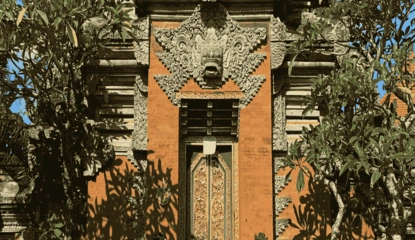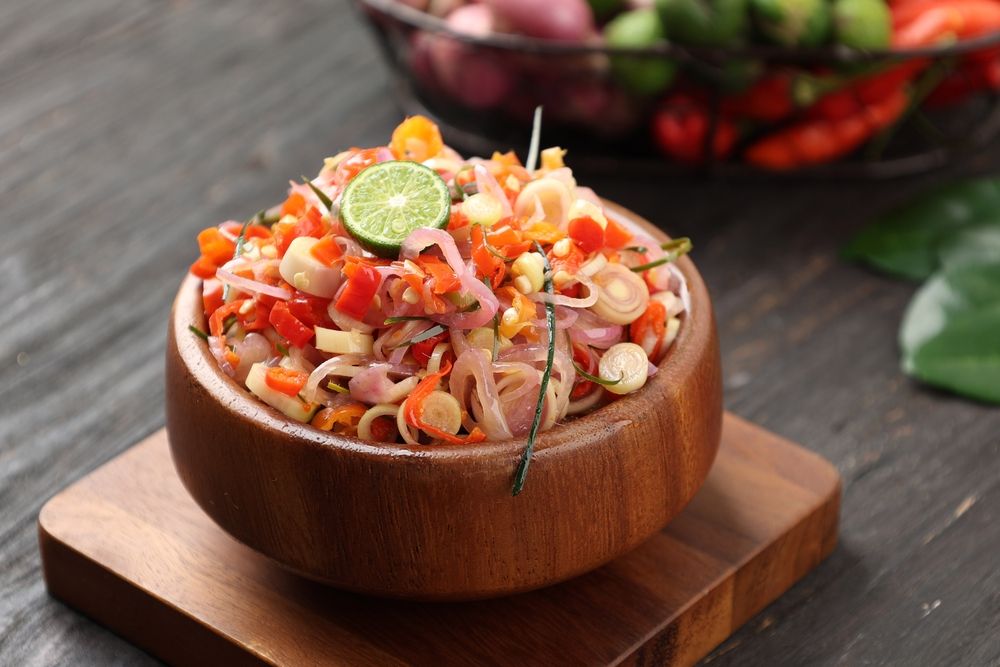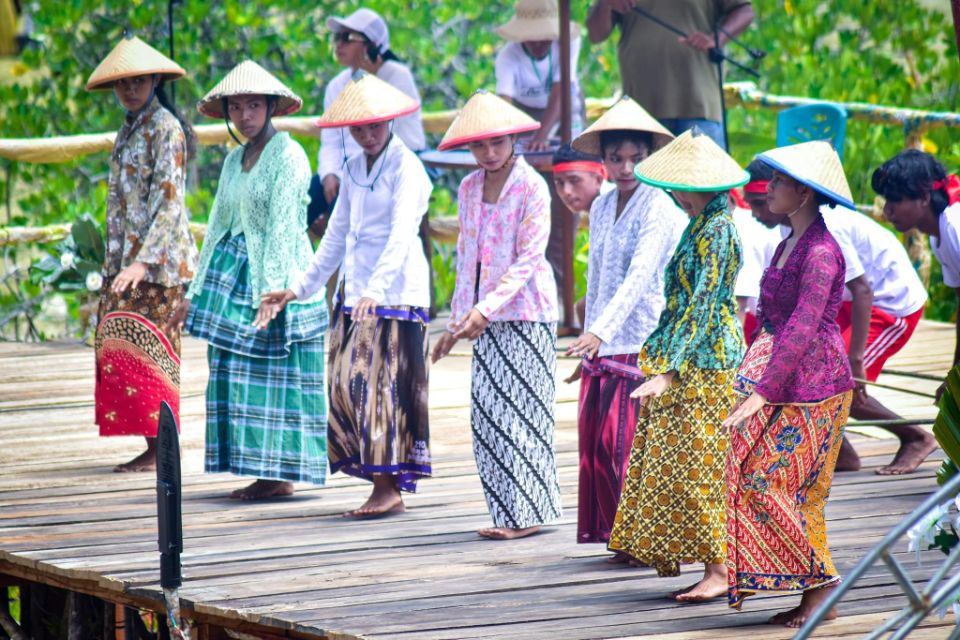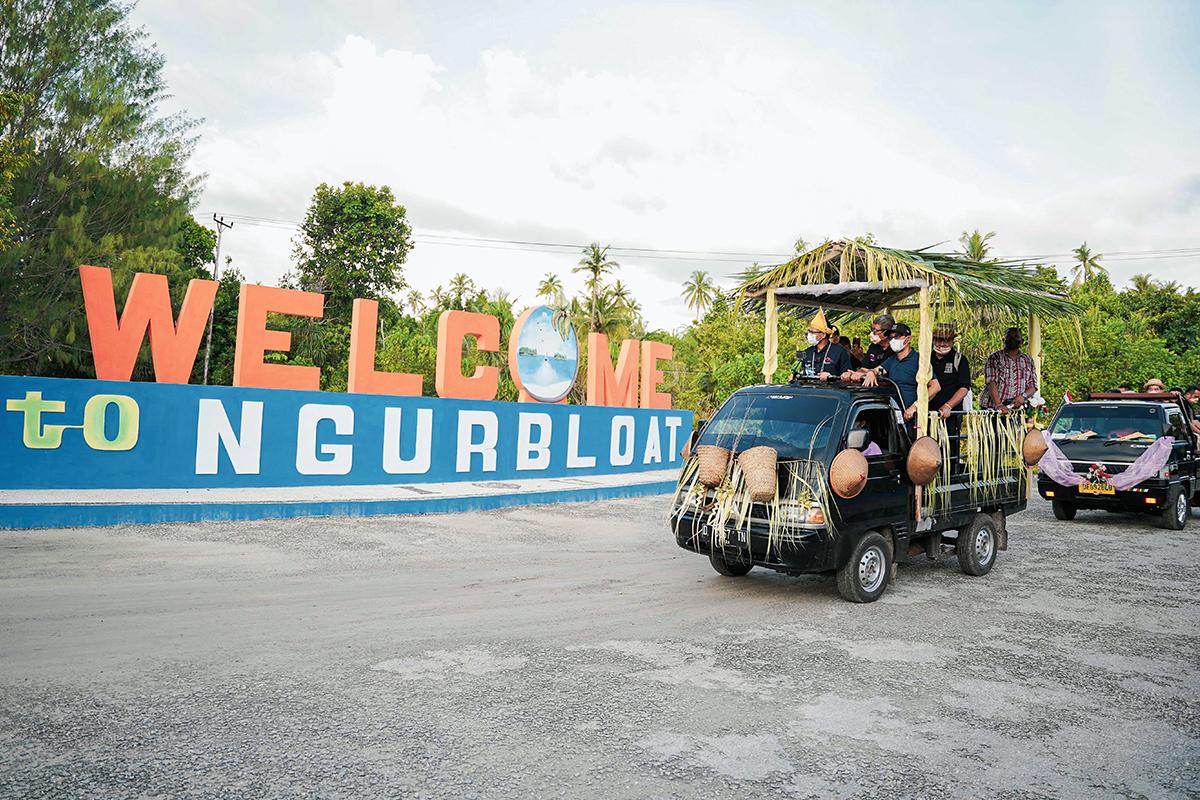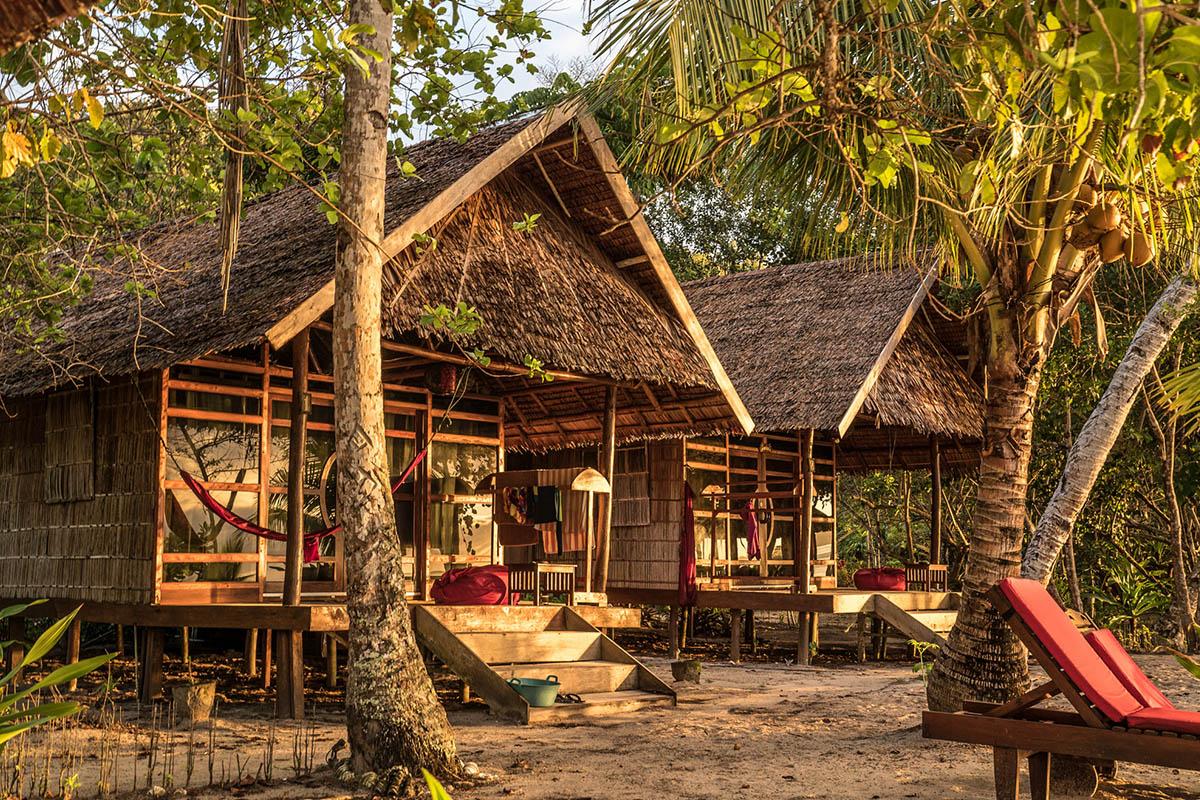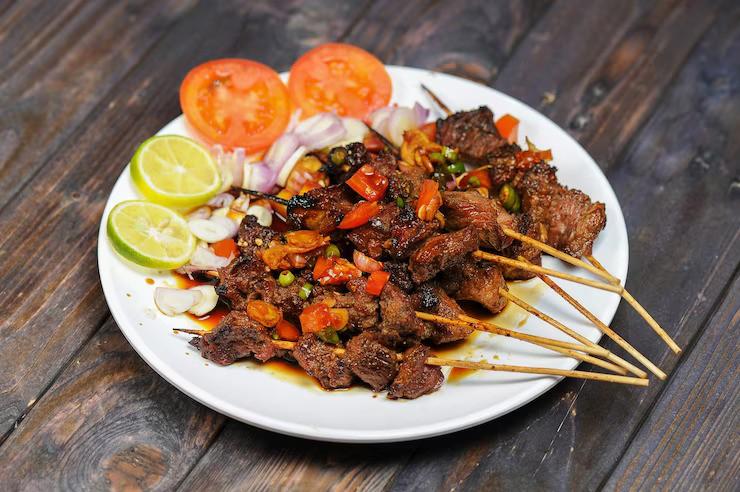Have you ever heard of sambal colo-colo? If not, you're missing out on one of the culinary gems from eastern Indonesia!
This fresh sambal sauce from the Moluccas and Papua not only embodies spiciness and acidity but also represents stories, traditions, and flavors deeply rooted in coastal culture.
Discover this sambal specialty, the perfect accompaniment to grilled fish.
Colo-Colo, a Taste Heritage from Eastern Indonesia
If you've ever visited Maluku or Papua, you'll know that food isn't just about taste, but also stories.
One of the most iconic is sambal colo-colo, a fresh sambal that pairs well with grilled fish and other seafood dishes.
Colo-colo originated in Maluku and is also known in parts of Papua. This sambal has a distinctive flavor: sour, spicy, fresh, and full of tropical spices.
Interestingly, colo-colo is not usually scrambled, but instead made from chili, onion, tomato, and orange juice so that the texture remains coarse and the color tempting.
Similar but not the same, Dabu vs. Colo-Colo
For those of you who are from Sulawesi or have tasted dabu-dabu, you might think colo-colo looks similar. However, there are actually many things that distinguish them. Let's discuss them one by one!
1. Origin: One from Sulawesi, One from Maluku
Dabu-dabu originated in North Sulawesi and has become an essential part of Manado cuisine. But colo-colo is a sambal from the Moluccas and spread to Papua through the influence of coastal culinary culture.
While both include fresh and raw flavors, they developed in different culinary cultures.
Dabu-dabu is associated with rica-rica and other spicy Manado dishes, while colo-colo is more attached to the simplicity of beach-style grilled fish.
2. Ingredients and Flavors: Comparison of Sourness, Spiciness, and Aroma
Ingredients-wise, both use cayenne pepper, shallots, and tomatoes.
However, colo-colo usually adds sweet or salty soy sauce, lime juice, and even onion marinade or hot coconut oil, something that is not common in dabu-dabu.
Flavor-wise, colo-colo is more complex, as it combines fresh sourness, sweetness, saltiness, and a slight roasted aroma. Meanwhile, dabu-dabu has a spicier and tangier flavor.
3. Dabu-dabu and Colo-Colo Pairing
If you like tuna or chicken rica-rica, dabu-dabu is the perfect complement. Colo-colo is a true friend of grilled fish, especially fresh sea fish such as snapper, baronang, or tongkol.
Serve colo-colo with hot rice and smoke-flavored grilled fish, and you're guaranteed to be hooked by its distinctive fresh flavor!
4. Sambal Colo-Colo and the Beachside Grilled Fish Tradition
In Maluku and Papua, eating grilled fish is not just a meal, but part of a small celebration.
People often gather by the beach, grill fresh fish caught that day, and serve it with rice, sambal colo-colo, and sometimes papaya leaves.
This tradition is not just about flavor, but also togetherness and connection with nature. Colo-colo adds flavor without masking the original taste of the fish.
If you visit Ambon or Sorong, take the time to find a simple warung on the beach, and you will experience an atmosphere that you can't find in any fancy restaurant.
Tips for Making Colo-Colo at Home
Want to try making your own colo-colo sauce? Relax, even if you're far from Maluku, you can still create an authentic taste at home. Here are the tips:
- Use fresh ingredients
Cayenne pepper, shallots, and fresh tomatoes are key to the fresh and tangy flavor of colo-colo.
- Add local lime juice.
In Maluku, fragrant local limes are usually used. You can use sambal oranges or lemons as an alternative.
- Use soy sauce to taste.
Some versions add a touch of salty or sweet soy sauce, depending on personal preference.
- Add a little hot oil.
Add a spoonful of hot cooking oil to the mixture to impart a distinctive aroma.
- Leave for a few minutes before serving.
You can do this to allow all the flavors to blend and penetrate more effectively.
This way, you can bring a touch of Eastern Indonesia to your dining table whenever you want!
Legendary Restaurants You Must Visit
If you're curious to taste authentic sambal colo-colo, straight from the source, some legendary restaurants in Maluku and Papua are definitely worth a visit.
It's not just about the taste, but also the dining experience, which is full of an Eastern Indonesian atmosphere.
1. RM Ikan Bakar Belut, Ambon
Located on the beachfront of Natsepa, this restaurant is famous for its fresh grilled fish served with a kick-ass colo-colo. The sambal is made impromptu from fresh, local ingredients and is spicy, sour, slightly sweet, and extremely fragrant.
Colo-colo is sold from Rp40,000 to Rp75,000 per portion (depending on the type of fish). The portion at this restaurant is quite large, suitable for 1 to 2 people. Served with rice and local stir-fried vegetables.
If you like to eat while listening to the waves and coastal breeze, this is the place to go!
2. RM Yougwa Lake Sentani, Papua
This floating restaurant serves grilled fish and Papuan colo-colo inspired by Moluccan recipes. The difference is that the sambal here is sometimes added with Papuan spices such as local basil leaves or virgin coconut oil.
The price of colo-colo at this restaurant is around Rp60,000 to Rp90,000 per complete portion. One portion of grilled fish here is significant enough for two people and is usually served on a banana leaf.
3. RM Taliwang Hati Dua Rasa, Sorong
Although famous for its taliwang chicken, this place also serves Moluccan-style colo-colo grilled fish with a fresh, daily-made sambal blend. The location is strategic and crowded with locals and tourists.
Ikan bakar and colo-colo at this restaurant are sold at a price range of Rp50,000 to Rp85,000 per portion. It's enough to feed one person, and you can choose the level of spiciness of the sambal!
Colo-colo may look simple, but it holds a great wealth of flavor and culture. From the shores of Maluku to your own kitchen, this sambal brings with it stories, traditions, and memories from Eastern Indonesia.
If you've never tried it, it's time to get to know not only the flavors but also appreciate the archipelago's incredible culinary heritage. Ready to try sambal colo-colo at home?





